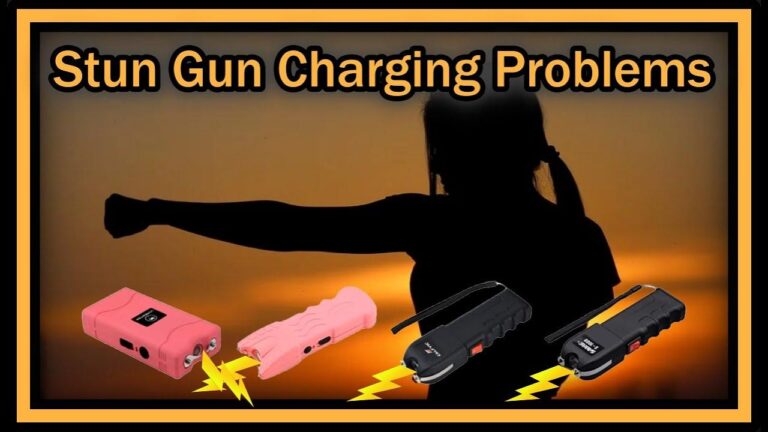Table of Contents
- Common Electrical Issues and How to Identify Them
- Ensuring Proper Battery Maintenance and Replacement
- Effective Cleaning Techniques for Optimal Electrode Performance
- When to Seek Professional Repair or Consider Device Replacement
- Wrapping Up
Common Electrical Issues and How to Identify Them
When a stun gun fails to deliver a shock, the root cause often lies in simple yet overlooked electrical issues. One of the most common problems is a depleted or improperly installed battery. Ensure the battery is fully charged and correctly positioned according to the device’s polarity markings. Corrosion or dirt on the battery contacts can also impede current flow, so it’s critical to clean these areas with a soft cloth or a mild abrasive. Another frequent culprit is a faulty switch or button; if it feels loose, sticks, or doesn’t trigger the device properly, internal contacts might be worn out or broken.
Additional electrical faults can stem from damaged wiring or burnt-out circuit components inside the stun gun. Signs of internal damage may include a noticeable burning smell or visible scorch marks when the unit is opened (always follow safety precautions first). To identify these issues, look for:
- Intermittent operation: device works sporadically, indicating loose internal connections.
- Absence of spark: no visible arc between electrodes even when activated.
- Unexpected heat generation: overheated areas inside the device indicating shorts or overloads.
Addressing these clues early helps prevent further damage and ensures your stun gun will reliably function when needed.
Ensuring Proper Battery Maintenance and Replacement
To keep your stun gun in optimal working condition, regular battery care is essential. Always use the manufacturer-recommended battery type and avoid mixing old and new batteries, as this can lead to uneven power distribution and potential malfunctions. Store the device in a cool, dry place to prevent moisture damage, which can degrade battery life. Additionally, recharge the battery fully before use, but never leave it plugged in for extended periods beyond the recommended charging time, as overcharging can reduce battery capacity and lifespan.
When it comes time for battery replacement, pay close attention to signs that indicate your stun gun is losing power, such as a weaker spark or insufficient shock intensity. Use the following checklist to ensure smooth replacement:
- Purchase batteries from trusted suppliers to guarantee quality.
- Follow the device’s manual carefully to avoid improper installation.
- Dispose of old batteries responsibly, adhering to local regulations.
- Test the stun gun immediately after replacement to confirm functionality.
Proper battery maintenance not only prolongs the life of your stun gun but also ensures it delivers the necessary performance when you need it most.
Effective Cleaning Techniques for Optimal Electrode Performance
Maintaining clean electrodes is crucial to ensure your stun gun delivers maximum shock power. Over time, dirt, oils, and residue can build up on the electrode surfaces, impeding conductivity and diminishing performance. To keep the electrodes in peak condition, start by wiping them gently with a soft cloth dampened with isopropyl alcohol. This not only removes contaminants but also helps prevent corrosion. Avoid using abrasive materials or excessive moisture, as these can damage the electrodes or internal circuitry.
For thorough cleaning, consider these key practices:
- Use only recommended cleaning solutions: Isopropyl alcohol is ideal for dissolving oils without leaving residues.
- Clean after every use: Regular maintenance extends the lifespan and reliability of the electrodes.
- Dry completely before storage: Moisture can cause short circuits or corrosion, so ensure electrodes are dry.
- Inspect electrodes regularly: Look for signs of wear, pitting, or damage, and replace if necessary.
When to Seek Professional Repair or Consider Device Replacement
When your stun gun consistently fails to deliver a shock despite performing basic troubleshooting, it might be time to consult a professional. Electrical components can degrade internally, and issues like damaged wiring or faulty circuitry require expert diagnostics and repair. Attempting advanced repairs on your own without the right tools and knowledge could further damage the device or void any warranty. If you notice unusual smells, visible corrosion, or the device overheating, these are clear signs to stop use immediately and seek specialist evaluation to ensure safety.
In some cases, professional repair costs may approach or exceed the price of a new stun gun, especially if the model is older or if multiple parts need replacement. Consider upgrading your device if you experience any of the following:
- Repeated failure to hold a charge despite battery replacement
- Physical damage to the casing or critical components
- Inconsistent performance or reduced shock intensity
- Obsolete model lacking current safety features
Balancing repair costs against reliability and updated protection features will help you decide whether replacing your stun gun is a smarter, safer investment in personal security.
Wrapping Up
In conclusion, encountering a stun gun that won’t deliver a shock can be frustrating, but with the right troubleshooting steps, many common issues can be resolved quickly and safely. From checking the battery and ensuring proper maintenance to inspecting for physical damage and understanding the device’s safety features, a methodical approach often restores functionality. Remember, if you’ve exhausted these tips and your stun gun still isn’t working, it’s best to consult the manufacturer or a professional rather than attempting complex repairs yourself. Staying informed and proactive ensures your stun gun remains a reliable tool for personal safety. Stay safe out there!Check Our Other Blogs
- StunGun – Your Trusted Source for Stun Guns, Laws, and Self-Defense Tips
- PepperSprayLaws – Your Trusted Resource for Pepper Spray Information
- StunGunLaws – Your Trusted Guide to Stun Gun Legality and Safety





